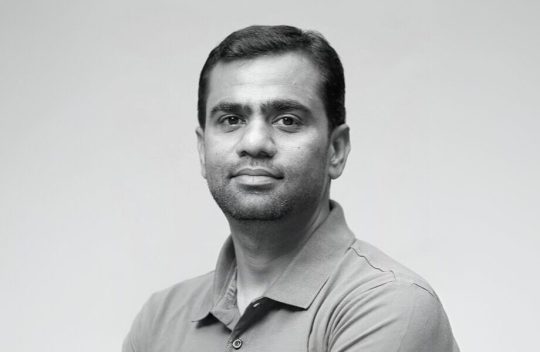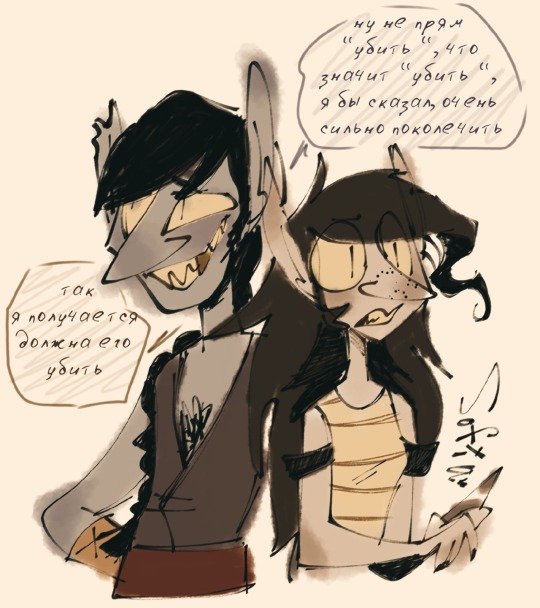#Collaborate
Explore tagged Tumblr posts
Text
I want Hozier and Taylor Swift to collaborate sooo bad
91 notes
·
View notes
Text
Ganesh Shankar, CEO & Co-Founder of Responsive – Interview Series
New Post has been published on https://thedigitalinsider.com/ganesh-shankar-ceo-co-founder-of-responsive-interview-series/
Ganesh Shankar, CEO & Co-Founder of Responsive – Interview Series


Ganesh Shankar, CEO and Co-Founder of Responsive, is an experienced product manager with a background in leading product development and software implementations for Fortune 500 enterprises. During his time in product management, he observed inefficiencies in the Request for Proposal (RFP) process—formal documents organizations use to solicit bids from vendors, often requiring extensive, detailed responses. Managing RFPs traditionally involves multiple stakeholders and repetitive tasks, making the process time-consuming and complex.
Founded in 2015 as RFPIO, Responsive was created to streamline RFP management through more efficient software solutions. The company introduced an automated approach to enhance collaboration, reduce manual effort, and improve efficiency. Over time, its technology expanded to support other complex information requests, including Requests for Information (RFIs), Due Diligence Questionnaires (DDQs), and security questionnaires.
Today, as Responsive, the company provides solutions for strategic response management, helping organizations accelerate growth, mitigate risk, and optimize their proposal and information request processes.
What inspired you to start Responsive, and how did you identify the gap in the market for response management software?
My co-founders and I founded Responsive in 2015 after facing our own struggles with the RFP response process at the software company we were working for at the time. Although not central to our job functions, we dedicated considerable time assisting the sales team with requests for proposals (RFPs), often feeling underappreciated despite our vital role in securing deals. Frustrated with the lack of technology to make the RFP process more efficient, we decided to build a better solution. Fast forward nine years, and we’ve grown to nearly 500 employees, serve over 2,000 customers—including 25 Fortune 100 companies—and support nearly 400,000 users worldwide.
How did your background in product management and your previous roles influence the creation of Responsive?
As a product manager, I was constantly pulled by the Sales team into the RFP response process, spending almost a third of my time supporting sales instead of focusing on my core product management responsibilities. My two co-founders experienced a similar issue in their technology and implementation roles. We recognized this was a widespread problem with no existing technology solution, so we leveraged our almost 50 years of combined experience to create Responsive. We saw an opportunity to fundamentally transform how organizations share information, starting with managing and responding to complex proposal requests.
Responsive has evolved significantly since its founding in 2015. How do you maintain the balance between staying true to your original vision and adapting to market changes?
First, we’re meticulous about finding and nurturing talent that embodies our passion – essentially cloning our founding spirit across the organization. As we’ve scaled, it’s become critical to hire managers and team members who can authentically represent our core cultural values and commitment.
At the same time, we remain laser-focused on customer feedback. We document every piece of input, regardless of its size, recognizing that these insights create patterns that help us navigate product development, market positioning, and any uncertainty in the industry. Our approach isn’t about acting on every suggestion, but creating a comprehensive understanding of emerging trends across a variety of sources.
We also push ourselves to think beyond our immediate industry and to stay curious about adjacent spaces. Whether in healthcare, technology, or other sectors, we continually find inspiration for innovation. This outside-in perspective allows us to continually raise the bar, inspiring ideas from unexpected places and keeping our product dynamic and forward-thinking.
What metrics or success indicators are most important to you when evaluating the platform’s impact on customers?
When evaluating Responsive’s impact, our primary metric is how we drive customer revenue. We focus on two key success indicators: top-line revenue generation and operational efficiency. On the efficiency front, we aim to significantly reduce RFP response time – for many, we reduce it by 40%. This efficiency enables our customers to pursue more opportunities, ultimately accelerating their revenue generation potential.
How does Responsive leverage AI and machine learning to provide a competitive edge in the response management software market?
We leverage AI and machine learning to streamline response management in three key ways. First, our generative AI creates comprehensive proposal drafts in minutes, saving time and effort. Second, our Ask solution provides instant access to vetted organizational knowledge, enabling faster, more accurate responses. Third, our Profile Center helps InfoSec teams quickly find and manage security content.
With over $600 billion in proposals managed through the Responsive platform and four million Q&A pairs processed, our AI delivers intelligent recommendations and deep insights into response patterns. By automating complex tasks while keeping humans in control, we help organizations grow revenue, reduce risk, and respond more efficiently.
What differentiates Responsive’s platform from other solutions in the industry, particularly in terms of AI capabilities and integrations?
Since 2015, AI has been at the core of Responsive, powering a platform trusted by over 2,000 global customers. Our solution supports a wide range of RFx use cases, enabling seamless collaboration, workflow automation, content management, and project management across teams and stakeholders.
With key AI capabilities—like smart recommendations, an AI assistant, grammar checks, language translation, and built-in prompts—teams can deliver high-quality RFPs quickly and accurately.
Responsive also offers unmatched native integrations with leading apps, including CRM, cloud storage, productivity tools, and sales enablement. Our customer value programs include APMP-certified consultants, Responsive Academy courses, and a vibrant community of 1,500+ customers sharing insights and best practices.
Can you share insights into the development process behind Responsive’s core features, such as the AI recommendation engine and automated RFP responses?
Responsive AI is built on the foundation of accurate, up-to-date content, which is critical to the effectiveness of our AI recommendation engine and automated RFP responses. AI alone cannot resolve conflicting or incomplete data, so we’ve prioritized tools like hierarchical tags and robust content management to help users organize and maintain their information. By combining generative AI with this reliable data, our platform empowers teams to generate fast, high-quality responses while preserving credibility. AI serves as an assistive tool, with human oversight ensuring accuracy and authenticity, while features like the Ask product enable seamless access to trusted knowledge for tackling complex projects.
How have advancements in cloud computing and digitization influenced the way organizations approach RFPs and strategic response management?
Advancements in cloud computing have enabled greater efficiency, collaboration, and scalability. Cloud-based platforms allow teams to centralize content, streamline workflows, and collaborate in real time, regardless of location. This ensures faster turnaround times and more accurate, consistent responses.
Digitization has also enhanced how organizations manage and access their data, making it easier to leverage AI-powered tools like recommendation engines and automated responses. With these advancements, companies can focus more on strategy and personalization, responding to RFPs with greater speed and precision while driving better outcomes.
Responsive has been instrumental in helping companies like Microsoft and GEODIS streamline their RFP processes. Can you share a specific success story that highlights the impact of your platform?
Responsive has played a key role in supporting Microsoft’s sales staff by managing and curating 20,000 pieces of proposal content through its Proposal Resource Library, powered by Responsive AI. This technology enabled Microsoft’s proposal team to contribute $10.4 billion in revenue last fiscal year. Additionally, by implementing Responsive, Microsoft saved its sellers 93,000 hours—equivalent to over $17 million—that could be redirected toward fostering stronger customer relationships.
As another example of Responsive providing measurable impact, our customer Netsmart significantly improved their response time and efficiency by implementing Responsive’s AI capabilities. They achieved a 10X faster response time, increased proposal submissions by 67%, and saw a 540% growth in user adoption. Key features such as AI Assistant, Requirements Analysis, and Auto Respond played crucial roles in these improvements. The integration with Salesforce and the establishment of a centralized Content Library further streamlined their processes, resulting in a 93% go-forward rate for RFPs and a 43% reduction in outdated content. Overall, Netsmart’s use of Responsive’s AI-driven platform led to substantial time savings, enhanced content accuracy, and increased productivity across their proposal management operations.
JAGGAER, another Responsive customer, achieved a double-digit win-rate increase and 15X ROI by using Responsive’s AI for content moderation, response creation, and Requirements Analysis, which improved decision-making and efficiency. User adoption tripled, and the platform streamlined collaboration and content management across multiple teams.
Where do you see the response management industry heading in the next five years, and how is Responsive positioned to lead in this space?
In the next five years, I see the response management industry being transformed by AI agents, with a focus on keeping humans in the loop. While we anticipate around 80 million jobs being replaced, we’ll simultaneously see 180 million new jobs created—a net positive for our industry.
Responsive is uniquely positioned to lead this transformation. We’ve processed over $600 billion in proposals and built a database of almost 4 million Q&A pairs. Our massive dataset allows us to understand complex patterns and develop AI solutions that go beyond simple automation.
Our approach is to embrace AI’s potential, finding opportunities for positive outcomes rather than fearing disruption. Companies with robust market intelligence, comprehensive data, and proven usage will emerge as leaders, and Responsive is at the forefront of that wave. The key is not just implementing AI, but doing so strategically with rich, contextual data that enables meaningful insights and efficiency.
Thank you for the great interview, readers who wish to learn more should visit Responsive,
#000#adoption#agents#ai#AI AGENTS#ai assistant#AI-powered#amp#Analysis#approach#apps#automation#background#billion#CEO#Cloud#cloud computing#cloud storage#collaborate#Collaboration#Community#Companies#comprehensive#computing#content#content management#content moderation#courses#crm#customer relationships
7 notes
·
View notes
Text
I appreciate those who adjusted my crown without telling the world how heavy it had become and spoke life to me when I couldn't utter an encouraging word. I'm grateful that I consistently cross paths with people who recognize the power and potential in others and take it upon themselves to congratulate, compliment, and collaborate - yet never try to compare, crush, or compete. I value individuals who authentically spread kindness, compassion, and wisdom everywhere they go and leave people better than they found them. I love when a person can love others and influence them to do the same. There is power in being a good person and an impact that reaches far beyond that initial interaction. Be someone who reminds others that there are genuine people in the world and inspires them to be great. Be the person you needed, yet may have never had. Be the one who shows others the freedom of truth by simply being yourself.
Morgan Richard Olivier - the freedom of forward
#morgan richard olivier#the freedom of forward#appreciate#crown#heavy#encouraging#grateful#recognize#power#potential#congratulate#compliment#collaborate#compare#crush#compete#kindness#compassion#wisdom#better#love
6 notes
·
View notes
Text
Dag.: So it turns out I have to kill him.
Wayl.: well, not directly "kill", which means "kill", I would say, very much to hurt.)

This is my art, sketch, with the character @mortismotorola . As far as I understand Wayland is a killer or something like that, and Dagny gets hooked on it. It was a thrill for me to draw this work. I hope you liked how I depicted it.)))
#art#bananakillerart#my characters#troll#dagny#oc troll#troll oc#mortismotorola fanart#Wayland#collaborate#sketch#sketches
24 notes
·
View notes
Text
So

Good morning,
18/09 was the day that the show premiere
While not everyone loves them, but Sonic SatAM is a part of Sonic. i really care for it even if it doesn't jive with the rest of the Sonic idea.
The Freedom Fighters will forever be Sonic's friends, Tails being cute, and the amazing Dr.Robotnik, Snivley, too. This man always brought me a good laugh and a reason to see him more


And not forgetting to mention Sally Acorn, the dudette protagonist of the show, specifically designed to be the Sonic's foil character; to show Sonic's weaknesses and strengths and always a fun time to see her grow and to learn more about the kingdom she must rule in the future

To artists, the sound design crew of this show, and of course Ben Hurst it's incredible to see what little of sonic everyone had but was able to bring a character so energetic and fun for small screen.
God bless you all.
I also wish to bring attention to the wonderful animation of the SatAm Rejuiced which is a participation of many artist do re-do a episode of Sonic SatAM
https://youtu.be/QPeSS-VJ180?si=NtPD5LHxKGowqvIl
#sonic satam#satam#sonic the hedgehog#sonic art#sonic#archie sonic#classic sonic#please sega#bring them back#rally4sally#fight4freedom#I miss them#animation#collaborate#artist collab#SatAM Rejuiced#new here#artists on tumblr#artist support#support small artists#support project#sonic fanart#sonic fan animation
21 notes
·
View notes
Text
tumblr is so different from other social media platforms.
Love that it doesn’t have comments but replies. I still wonder how I see so little of trolling.
Reblogs build up on the posts and somehow creatively make it expansive. Iss never fighting. Or rarely fighting.
And nothing gets lost. Like it’s not like something that is in your feed will get lost. Your posts are eternal. Someone will dig up that shit at some point in time and relate or connect to it. Blogs are not blackholes.
What an atmosphere.
I am vibing so much. ♥️♥️♥️♥️♥️♥️😍🥰🥰
#tumblr#desiblr#social media#media in general#collaborate#no competition#it’s collaborative not competitive#i feel no pressure#love this#and not to mention its so fucking queer#let’s go#muah#💋
3 notes
·
View notes
Text
if you think u don't understand polyamory (multiamory, polyphilia, ethical nonmonogamy, relationship anarchy, just never really narrowing down, etc)
just like think what if Frank Oz and Jim Henson friend brokeup early?
#inclusive#polyamory#relationship anarchy#with puppets#sfw#creative#collaborate#famous couples#platonic#ace#lgbtq+#queer#it's a take for fun ok don't get to psyched
4 notes
·
View notes
Text

The “Leaves San Mai” is coming. Here’s a razor sharp sneak peak before the official launch of our collaboration with @goonigans_uk. Discover more collaborations via link below.
www.fatpunkstudio.com/collaborations
#arrivingsoon#landingsoon#mockup#sneakypeak#burlwood#designlayout#sanmaiknife#designandbuild#boom#collaborations#collaborate#collabproject#productdesign#productdevelopment#productdesigner#blueprint#finishedlook#render#rendering#shape#knifedesign#art#design#beautiful
3 notes
·
View notes
Text
youtube
Throwback to NWS3:
For the first time in over 3yrs, I finally started making music again while in the nights & weekends cohort with buildspace. I love playing with the Launchpad iOS app — so I went on a livestream arranging beats. First time listen to the sample packs, so I didn't know how any of the songs would end up. Just creating on the fly!
I later made a video taking a look at Kaizen, a new music & social app found on product hunt -- giving artists a new way to share music with step versions, tracking the evolution from draft to master. Think soundcloud + GitHub's version control.
a couple songs I made with the launchpad app are now on kaizen to play with different versions over time! go check out both apps!
#buildspace#buildinpublic#nws3#creativeprocess#alterok#arrangingbeats#beatmaking#musician#collaborate#musicproduction#musicproducer#github#kaizen#versioncontrol#soundcloud#muse#amplifylabs#launchpad#songwriting#launchpadios#Youtube
2 notes
·
View notes
Text
No more noncollaborative friendships, we both gotta put in the effort
If I gotta get driven the 60 miles into the city to come see you, it'd be nice if you met me at the bus stop so I didn't have to take it and walk to your house alone - stuff like that
2 notes
·
View notes
Text

I play guitar, you dancing like this, videos go viral. Collaborate?
#just dance#dancing#dance#dance music#collaborate#youtube#no nudity#collaboration#model needed#friendship#partnership#music dance#viral#viral video#viral youtube
16 notes
·
View notes
Text
Whose Dream is it Anyways?
...Recalling on other lives, other times.. I was a part of a world where there was no monetary need. Whatsoever! Everyones “work” was something they loved and enjoyed contributing. There was more than enough for everyone. …..part of that ‘cohesive living’....

Keep reading on Substack.
#Whose Dream is it Anyways?#exerpt#soliloquy#From the Mind of an Introvert#join me#free#like minds#subscribe#dream big#life#LHA#1introvertedsage#substack#write#collaborate#Intsa Allegories
4 notes
·
View notes
Text
this bespectacled teenage nerd is a speck in the universe who perceives and achieves, and therefore, matters.
The best part about the Vlogbrothers, other than being ultimate lifesavers, is that not only do they make you sit down and think, but they’ve also given so much to the world.
John’s books, Hank’s music, for several years they’ve been raising money for charities that really need the help. They are a light in the world and they are slowly decreasing world suck.
They inspire me to be a better person.
- Danielle Howard (thisissomerandomshiz.tumblr)
_____________________________________________________________________
The Vlogbrothers have made me open up to new interests and allowed me to see the world in a new light. Also Hank and John are just awesome. The Nerdfighter community has also made me meet more friends and connect with my current ones.
- Molly
_____________________________________________________________________
John and Hank have helped me visualize the world around me as it really is: complex.
“Just because” is never a sufficient answer. Across fields and areas of science, literature, history, and politics, I’ve found answers to questions I never thought or dared to ask, and it didn’t end there. The videos I’ve watched and continue to watch inspire me to think deeply about things and people I encounter every day. That helps me recognize the blessings and imperfections of this wonderful, flawed world, and my own blessings and imperfections as well.
But, I don’t just sit around and ponder on every little thing.
More than that, this new-found perception gets me to move.
Nerdfighteria inspires me to think, write, create, affirm, collaborate, donate, and live in a way that decreases world suck.
Through the Nerdfighters, I have witnessed the power and significance of ideas.
The community motivates me to analyze the books and movies I love, to have the confidence join my school newspaper, to post my gifsets and edits regardless of the number of notes I think they’d get, to participate in non-government organizations even just by opening a new tab or clicking a button or buying a bracelet, to remember to tell my family and friends that I love them, to see the best side of others, to actively do something meaningful, and to remember to be awesome--and I do these not just because they make me happy.
If I’ve learned anything from Nerdfighteria, it’s that this bespectacled teenage nerd is a speck in the universe who perceives and achieves, and therefore, matters.
- leviosab (baginns.tumblr)
#nfstories#vlogbrothers#nerdfighters#nerdfighteria#better#contribute#learning#books#education#give#complexity#ponder#perspective#being moved#collaborate#friends#love#family#remember#ideas#mattering#power#teenagers
2 notes
·
View notes
